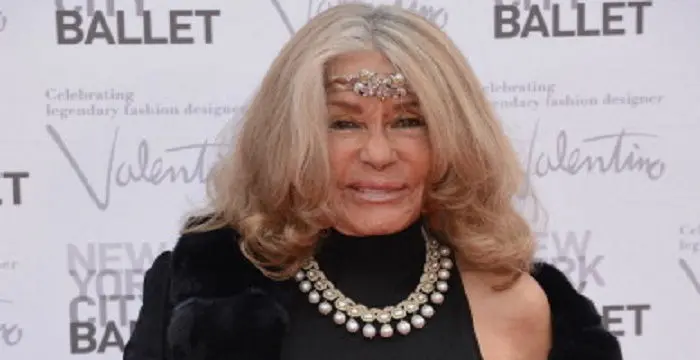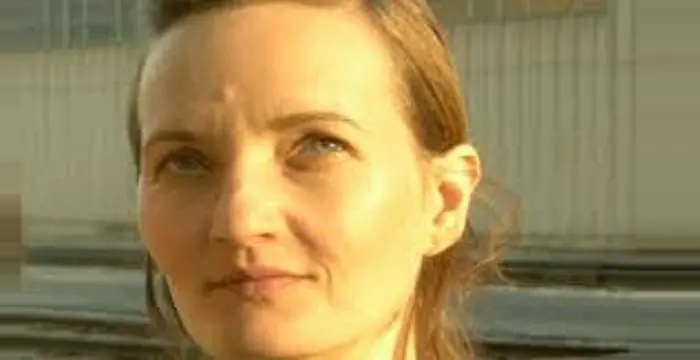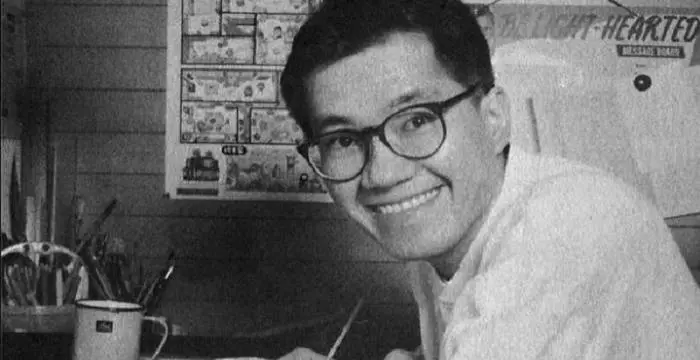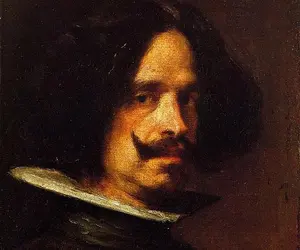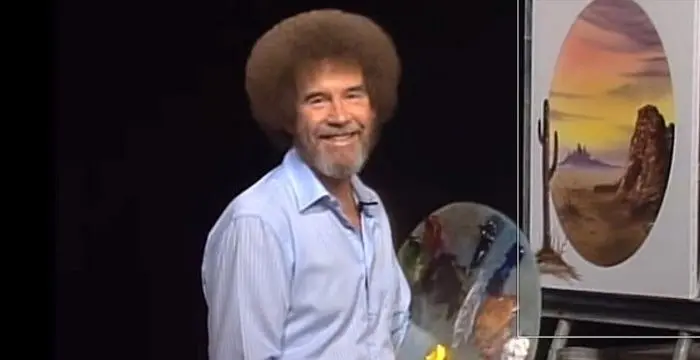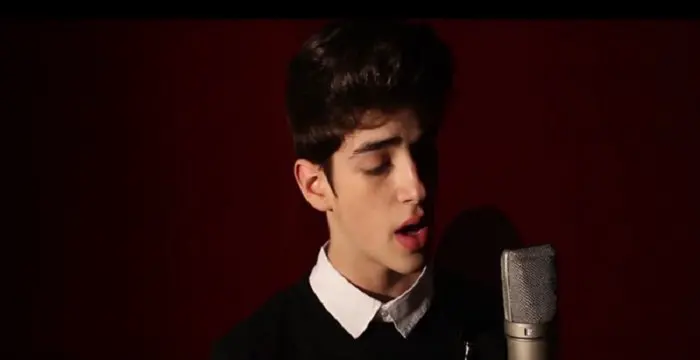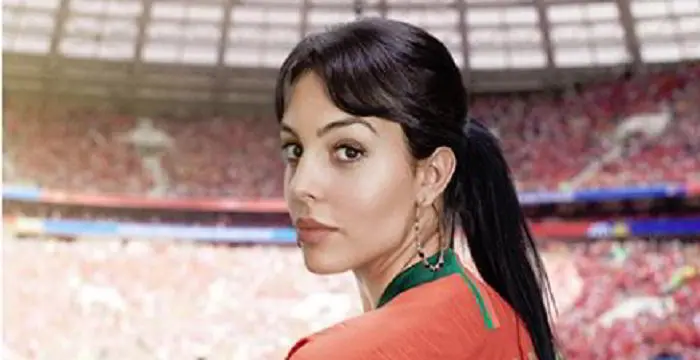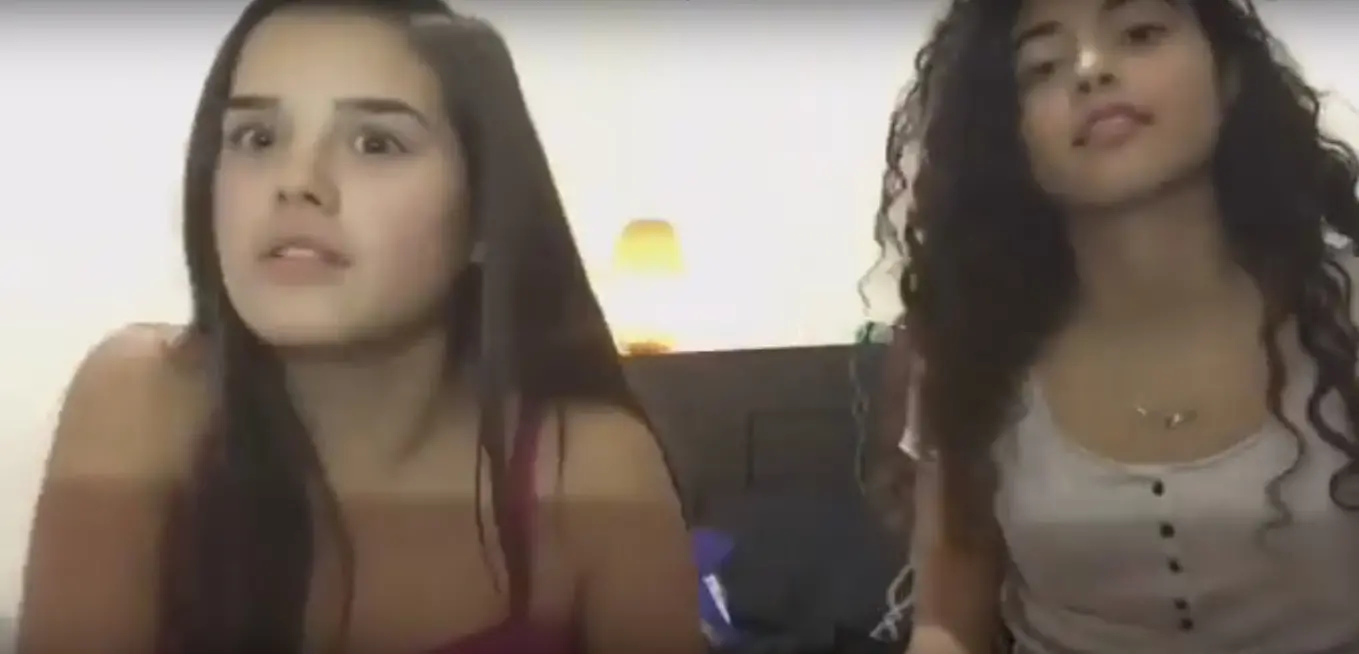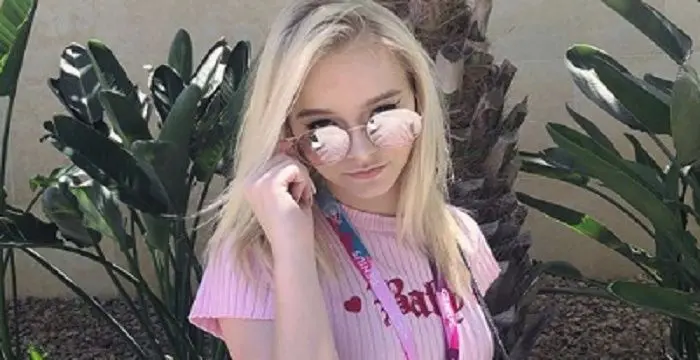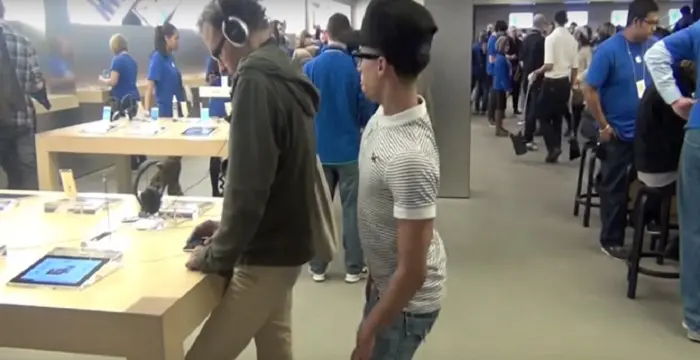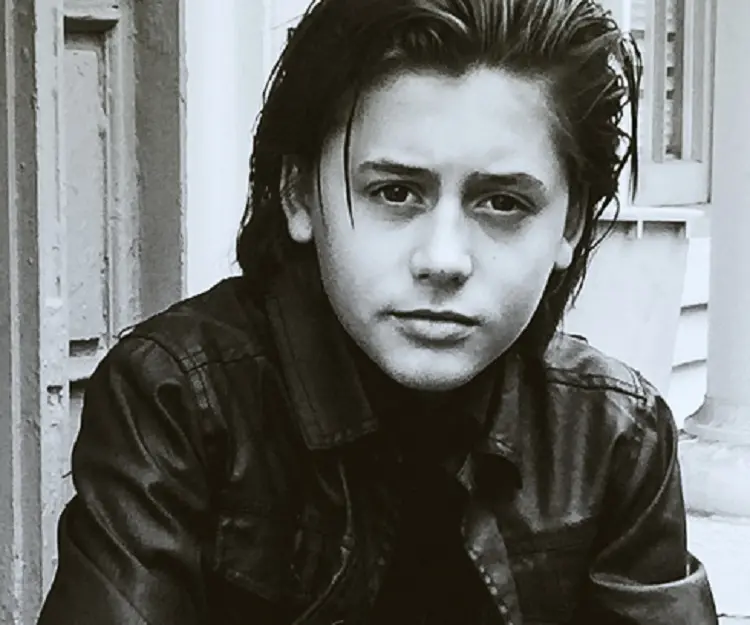
Diego Velázquez (Painter) - Artists, Timeline and Family
Diego Velázquez (Painter)'s Personal Details
Spanish painter Diego Velazquez grew popular as one of the leading artists in the royal court of King Philip IV
| Information | Detail |
|---|---|
| Birthday | June 6, 1599 |
| Died on | August 6, 1660 |
| Nationality | Spanish |
| Famous | Artists & Painters, Artists |
| Spouses | Juana Pacheco |
| Known as | Diego Rodríguez de Silva y Velázquez |
| Childrens | Francisca de Silva Velázquez y Pacheco, Ignacia de Silva Velázquez y Pacheco |
| Birth Place | Seville |
| Gender | Male |
| Father | João Rodrigues da Silva |
| Mother | Jerónima Velázquez |
| Sun Sign | Gemini |
| Born in | Seville |
| Famous as | Painter |
| Died at Age | 61 |
// Famous Artists & Painters
Micheline Roquebrune
Micheline Roquebrune is a petite Moroccan-French painter best known as the third wife the legendary Scottish actor Sir Sean Connery. Check out this biography to know about her birthday, childhood, family life, achievements and fun facts about her.
Yvonne McGuinness
Yvonne McGuinness is an Irish multimedia artist. This biography profiles her childhood, family, personal life, career, etc.
Akira Toriyama
Akira Toriyama is a Japanese manga artist. This biography profiles his childhood, family, personal life, achievements, etc.
Diego Velázquez (Painter)'s photo
Who is Diego Velázquez (Painter)?
His complex artworks with realistic subjects, infusing life onto the canvas, made him one of the most admired painters in Europe during the 17th century, or rather the Spanish Golden Age. Not only did he possess a god-gifted talent to capture life into paintings, but he was also capable of giving them a true feel. Diego Velazquez was, undoubtedly, the most significant Spanish painter who popularized Western art in his own naturalistic style, playing with brushstrokes and color palettes. His stunning paintings were typically a blend of both bright and dull color schemes, especially blacks, greys, reds and blue-greens. The royal Venetian paintings, belonging to the 16th century, played a major role in drawing him towards visual impressions, evident from the numerous masterpieces he created during his entire life. What added to his popularity of using unique techniques and different styles in painting portraits was his employment as a leading artist in the royal court of King Philip IV, who refused to get his portrait painted by no one else except Velazquez. His paintings mostly depicted religious themes and cultural subjects, though he composed innumerable portraits that talked of the members of the Spanish royal family, significant European figures, as well as the common man.
// Famous Artists
Susan Mikula
Susan Mikula is an American artist and photographer. Check out this biography to know about her childhood, family life, achievements and fun factsabout her life.
Akira Toriyama
Akira Toriyama is a Japanese manga artist. This biography profiles his childhood, family, personal life, achievements, etc.
Bob Ross
Bob Ross was a celebrated, creative American painter and an art instructor. Check out this biography to know about his birthday, childhood, family life, achievements and fun facts about him.
Childhood & Early Life
Diego Rodriguez de Silva Velazquez is believed to have been born a few days before his baptism on June 6, 1599, in Seville, Andalucia, as the eldest child to lawyer Juan Rodriguez de Silva and Jeronima Velazquez.
He was drawn towards art since childhood and hence, he joined famous painter Francisco de Herrera who taught him to paint with long-bristled brushes.
He left Herrera’s studio after one year and joined local artist Francisco Pacheco on a six-year apprenticeship, who taught him techniques of drawing, painting, still-life and portraiture.
Career
He finished his apprenticeship in 1617 and set up his own studio. His initial works displayed genre scenes and sacred subjects - ‘Old Woman Frying Eggs’ (1618), ‘The Adoration of the Magi’ (1619), and ‘Mother Jeronima de la Fuente’ (1620).
In 1622, he traveled to Madrid in the hope of acquiring royal patronage and made a portrait of poet Luis de Gongora, but didn’t find any success.
He returned from Madrid a year later, in 1623, on Prime Minister Count-Duke of Olivares’s command to paint a portrait of the young King of Spain, King Philip IV, who appointed him as one of his court painters, upon seeing his composition.
His artworks were largely inspired by the impressive Venetian paintings present in the royal palace, especially Titian and Rubens, evident from ‘Los Borrachos’ (The Triumph of Bacchus) – one of his finest creations during that period.
In 1629, he went to Italy to study and improve his painting, which turned highly successful in developing his artistic skills, largely due to the influence of the local painters.
The contemporary Italian culture was brought out on the canvas through his two paintings, exhibiting nude males, which he composed in Rome – ‘Apollo in the Forge of Vulcan’ and ‘Joseph’s Coat Presented to Jacob’.
Upon his return after a year and half, he started painting a series of portraits, featuring the royal family on horseback, apart from capturing the dwarves, who served in the King’s court, on the canvas as seen in ‘The Favorite’ (1644).
Apart from regular painting tasks, he took up different responsibilities in the royal household. In 1936, he became a wardrobe assistant, followed by superintendent of palace works in 1643.
His second trip to Italy happened in 1649 where he purchased paintings and updated himself with the changing Italian art.
While in Rome, Accademia di San Luca and Congregazione dei Virtuosi al Pantheon, two prestigious artist organizations, included him as a member, in 1650.
He returned to Madrid in 1651 and was immediately appointed as the chamberlain of the palace by the King. He found new subjects in the new queen of the King, along with her children, to portray on the canvas.
He became a knight of Santiago in 1658 and was assigned the responsibility of overseeing the decorations of Infanta Maria Theresa’s wedding with Louis XIV of France on the French border.
Major Works
During his second trip to Italy in 1649, he painted one of his finest masterworks - a portrait of Pope Innocent X, along with a realistic portrait of his servant, Juan de Pareja, and his only surviving female nude painting ‘Venus Rokeby’.
In 1656, he captured the young Infanta Margaret Theresa in his painting ‘Las Meninas’ (The Maids of Honour), surrounded by her maids and other attendants, which became one of his most acclaimed magnum opuses.
He painted the famous ‘Las hilanderas’ (The Spinners), perhaps among his last compositions, in 1657, representing the Fable of Arachne or the interiors of the royal tapestry, drawn largely from the Titian’s ‘The Rape of Europa’.
‘Infanta Margarita Teresa in a Blue Dress’ (1659), a unique creation radiating an impressionistic appeal of its three-dimensional quality when viewed from a certain distance, was the last portrait he made of the royal family.
Personal Life & Legacy
He married his mentor’s daughter, Juana Pacheco, in 1618. The couple had two daughters – Francisca de Silva Velazquez y Pacheco (1619) and Ignacia de Silva Velazquez y Pacheco (1621).
Upon his return to Madrid from Infanta Maria Theresa’s wedding in France, he fell ill with fever and died on August 6, 1660. He was laid to rest in the Fuensalida vault, in the San Juan Bautista Church.
His wife Juana passed away within a week of his death and was buried beside Velazquez. However, the French destroyed the church in 1811 and hence, his place of burial remains unknown.
On the occasion of his 400th birth anniversary in 1999, Prado Museum in Spain exhibited his artworks, while a fresh search on his tomb was carried out.
Trivia
As part of the Spanish custom to continue the maternal inheritance, he adopted his mother’s name being the eldest male.
This great master was an ancestor of the Marquesses of Monteleone, whose descendents include European royals, such as King Albert II of Belgium, Prince of Liechtenstein, Queen Sofia of Spain, and Henri, Grand Duke of Luxembourg.
His works of Western art became inspirations for other notable artists, including Salvador Dali, Francis Bacon, and Pablo Picasso, while French impressionist Edouard Manet nicknamed him as ‘the painter of painters’.
// Famous Spanish peoples
Manu Rios
Check out all that you wanted to know about Manu Rios, the famous Spanish TV actor; his birthday, his family and personal life, his girlfriends, fun trivia facts and more.
Georgina Rodríguez
Georgina Rodríguez is a Spanish model who is best known as the partner of Portuguese professional footballer Cristiano Ronaldo. Check out this biography to know about her birthday, childhood, family life, achievements and fun facts about her.
Malu Trevejo
Check out all that you wanted to know about Malu Trevejo, the famous American Musical.ly Star; her birthday, her family and personal life, her boyfriends, fun trivia facts and more.
Diego Velázquez (Painter) biography timelines
- // 1599Diego Rodriguez de Silva Velazquez is believed to have been born a few days before his baptism on June 6, 1599, in Seville, Andalucia, as the eldest child to lawyer Juan Rodriguez de Silva and Jeronima Velazquez.
- // 1617 To 1620He finished his apprenticeship in 1617 and set up his own studio. His initial works displayed genre scenes and sacred subjects - ‘Old Woman Frying Eggs’ (1618), ‘The Adoration of the Magi’ (1619), and ‘Mother Jeronima de la Fuente’ (1620).
- // 1618He married his mentor’s daughter, Juana Pacheco, in 1618. The couple had two daughters – Francisca de Silva Velazquez y Pacheco (1619) and Ignacia de Silva Velazquez y Pacheco (1621).
- // 1622In 1622, he traveled to Madrid in the hope of acquiring royal patronage and made a portrait of poet Luis de Gongora, but didn’t find any success.
- // 1623He returned from Madrid a year later, in 1623, on Prime Minister Count-Duke of Olivares’s command to paint a portrait of the young King of Spain, King Philip IV, who appointed him as one of his court painters, upon seeing his composition.
- // 1629In 1629, he went to Italy to study and improve his painting, which turned highly successful in developing his artistic skills, largely due to the influence of the local painters.
- // 1643 To 1936Apart from regular painting tasks, he took up different responsibilities in the royal household. In 1936, he became a wardrobe assistant, followed by superintendent of palace works in 1643.
- // 1644Upon his return after a year and half, he started painting a series of portraits, featuring the royal family on horseback, apart from capturing the dwarves, who served in the King’s court, on the canvas as seen in ‘The Favorite’ (1644).
- // 1649His second trip to Italy happened in 1649 where he purchased paintings and updated himself with the changing Italian art.
- // 1649During his second trip to Italy in 1649, he painted one of his finest masterworks - a portrait of Pope Innocent X, along with a realistic portrait of his servant, Juan de Pareja, and his only surviving female nude painting ‘Venus Rokeby’.
- // 1650While in Rome, Accademia di San Luca and Congregazione dei Virtuosi al Pantheon, two prestigious artist organizations, included him as a member, in 1650.
- // 1651He returned to Madrid in 1651 and was immediately appointed as the chamberlain of the palace by the King. He found new subjects in the new queen of the King, along with her children, to portray on the canvas.
- // 1656In 1656, he captured the young Infanta Margaret Theresa in his painting ‘Las Meninas’ (The Maids of Honour), surrounded by her maids and other attendants, which became one of his most acclaimed magnum opuses.
- // 1657He painted the famous ‘Las hilanderas’ (The Spinners), perhaps among his last compositions, in 1657, representing the Fable of Arachne or the interiors of the royal tapestry, drawn largely from the Titian’s ‘The Rape of Europa’.
- // 1658He became a knight of Santiago in 1658 and was assigned the responsibility of overseeing the decorations of Infanta Maria Theresa’s wedding with Louis XIV of France on the French border.
- // 1659‘Infanta Margarita Teresa in a Blue Dress’ (1659), a unique creation radiating an impressionistic appeal of its three-dimensional quality when viewed from a certain distance, was the last portrait he made of the royal family.
- // 6th Aug 1660Upon his return to Madrid from Infanta Maria Theresa’s wedding in France, he fell ill with fever and died on August 6, 1660. He was laid to rest in the Fuensalida vault, in the San Juan Bautista Church.
- // 1811His wife Juana passed away within a week of his death and was buried beside Velazquez. However, the French destroyed the church in 1811 and hence, his place of burial remains unknown.
- // 1999On the occasion of his 400th birth anniversary in 1999, Prado Museum in Spain exhibited his artworks, while a fresh search on his tomb was carried out.
// Famous Gemini Celebrities peoples
Wentworth Miller
Wentworth Miller is an American actor and screenwriter who achieved recognition for his role in the TV series ‘Prison Break’.
Joyce Meyer
Joyce Meyer is a Christian author and speaker. This biography provides detailed information about her childhood, life, achievements, works & timeline
Zoe LaVerne
Zoe LaVerne is an American musical.ly star. Check out this biography to know more about her family, personal life, including her age, birthday, etc.
WolfieRaps
Check out all that you wanted to know about WolfieRaps, the famous YouTube Personality; his birthday, his family and personal life, his girlfriends, fun trivia facts and more.
Adam Saleh
Check out all that you wanted to know about Adam Saleh, the famous YouTube Personality; his birthday, his family and personal life, his girlfriends, fun trivia facts and more.
Isaak Presley
All about American actor and singer Isaak Presley including his age, birthday, family life, girlfriends, net worth, and some fun facts.
Diego Velázquez (Painter)'s FAQ
What is Diego Velázquez (Painter) birthday?
Diego Velázquez (Painter) was born at 1599-06-06
When was Diego Velázquez (Painter) died?
Diego Velázquez (Painter) was died at 1660-08-06
Where was Diego Velázquez (Painter) died?
Diego Velázquez (Painter) was died in Madrid
Which age was Diego Velázquez (Painter) died?
Diego Velázquez (Painter) was died at age 61
Where is Diego Velázquez (Painter)'s birth place?
Diego Velázquez (Painter) was born in Seville
What is Diego Velázquez (Painter) nationalities?
Diego Velázquez (Painter)'s nationalities is Spanish
Who is Diego Velázquez (Painter) spouses?
Diego Velázquez (Painter)'s spouses is Juana Pacheco
Who is Diego Velázquez (Painter) childrens?
Diego Velázquez (Painter)'s childrens is Francisca de Silva Velázquez y Pacheco, Ignacia de Silva Velázquez y Pacheco
Who is Diego Velázquez (Painter)'s father?
Diego Velázquez (Painter)'s father is João Rodrigues da Silva
Who is Diego Velázquez (Painter)'s mother?
Diego Velázquez (Painter)'s mother is Jerónima Velázquez
What is Diego Velázquez (Painter)'s sun sign?
Diego Velázquez (Painter) is Gemini
How famous is Diego Velázquez (Painter)?
Diego Velázquez (Painter) is famouse as Painter
